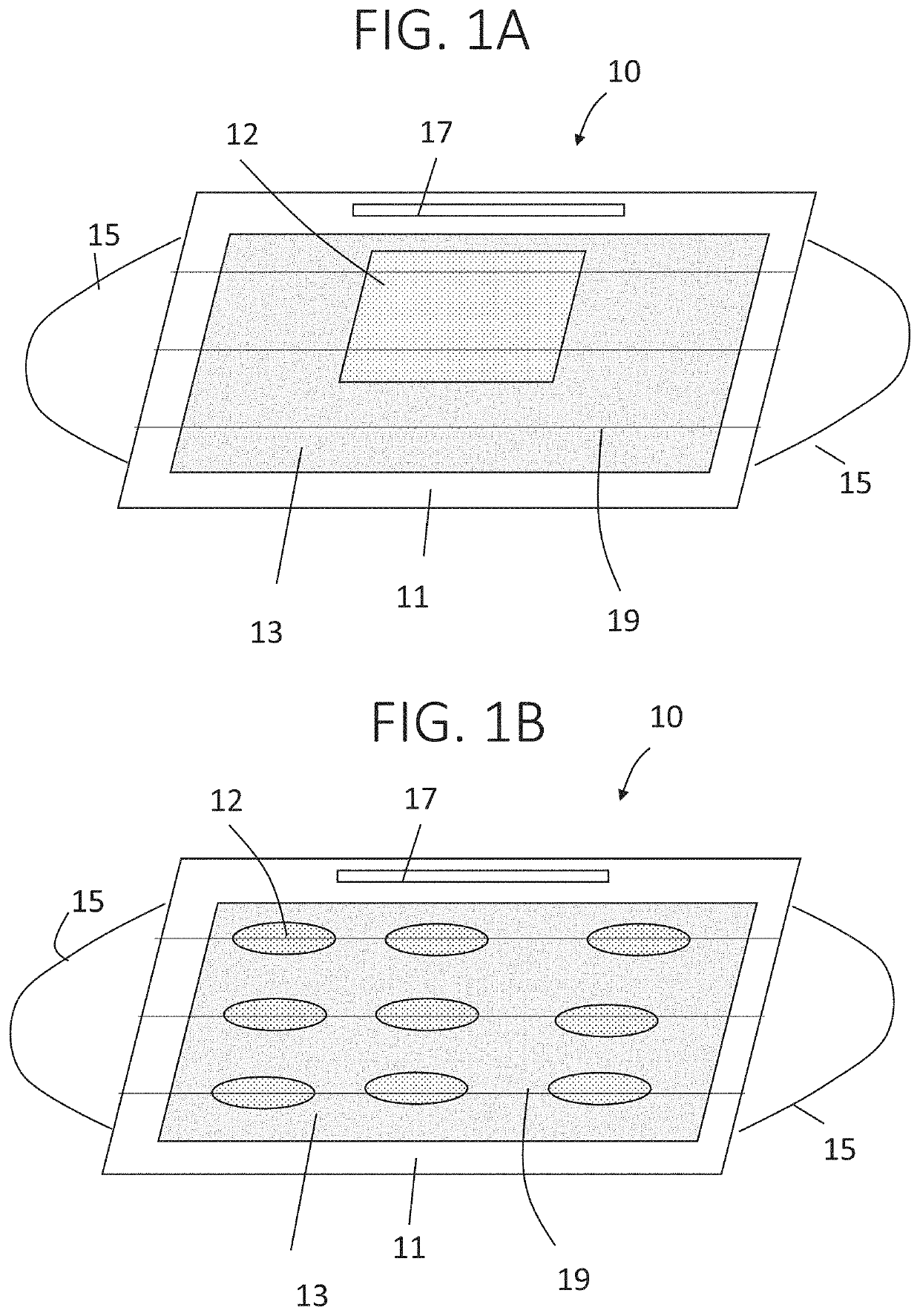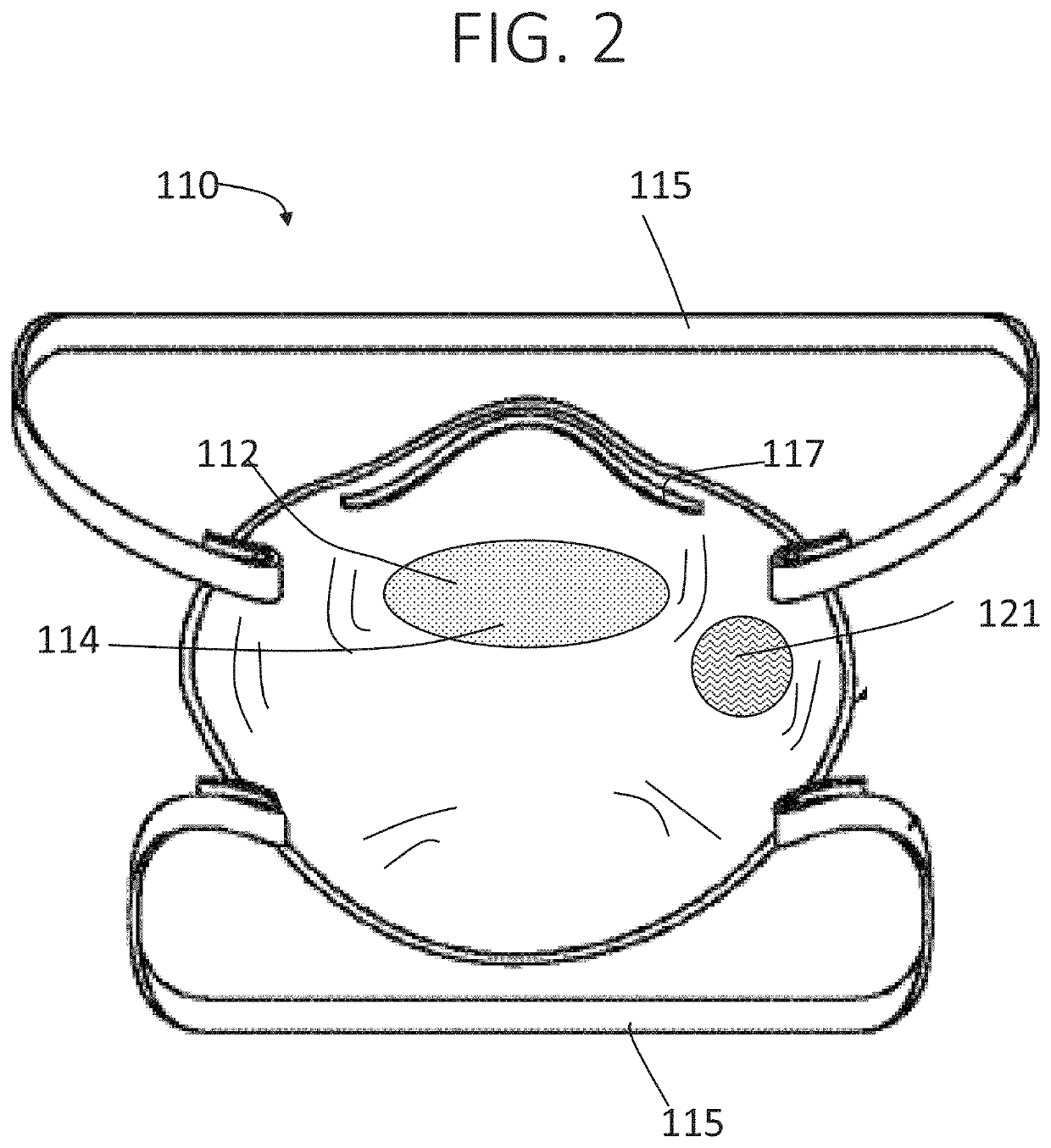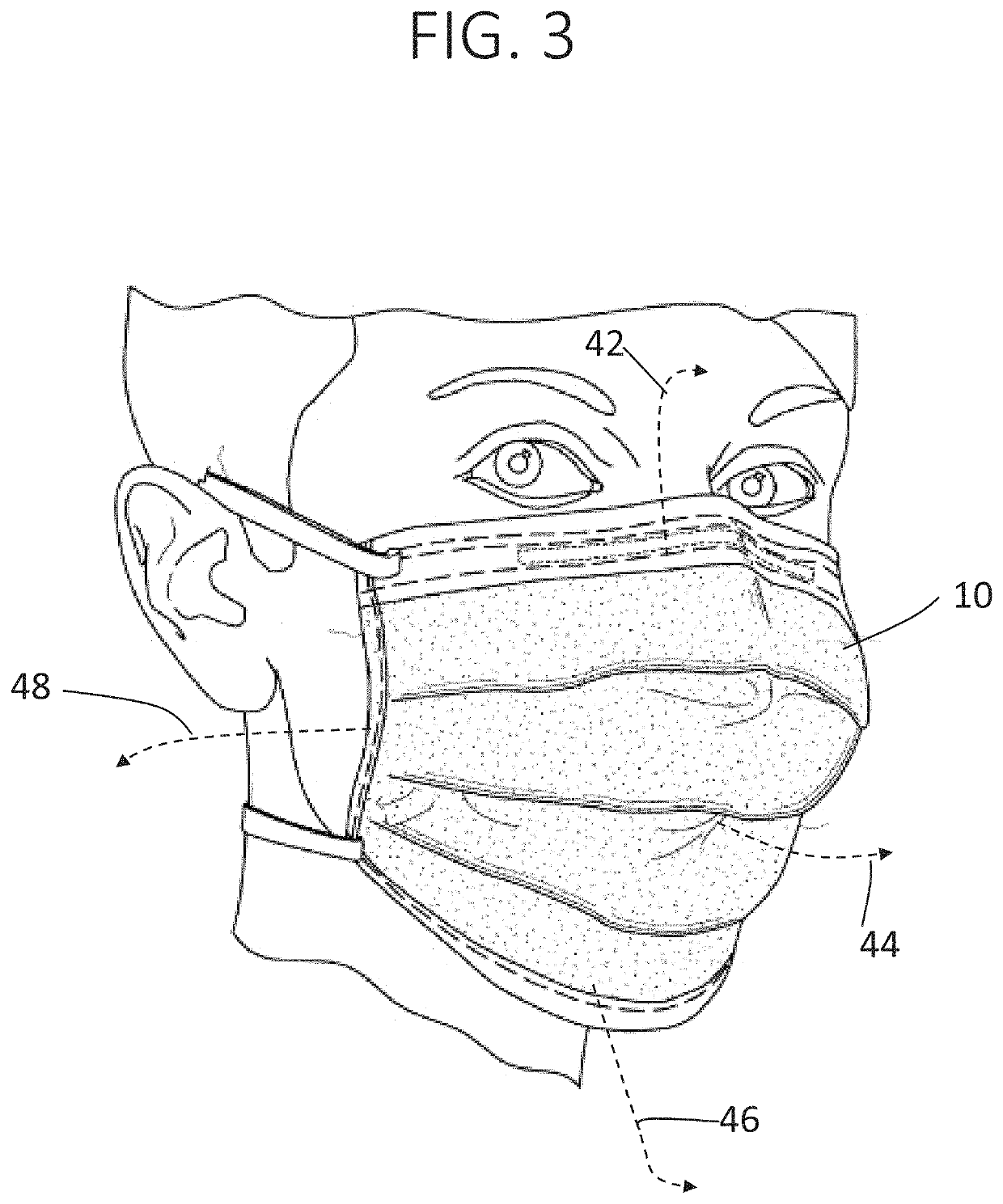Automatic particle or scent tracing to check social distancing in public places
a technology of social distancing and automatic particle or scent tracing, which is applied in the direction of breathing protection, protective clothing, instruments, etc., can solve the problems of not every person wearing the mask properly, masks are likely even less effective at preventing airborne transmission, and the utility of preventing airborne transmission via small aerosol particles is more limited
- Summary
- Abstract
- Description
- Claims
- Application Information
AI Technical Summary
Benefits of technology
Problems solved by technology
Method used
Image
Examples
Embodiment Construction
[0038]The present invention, in some embodiments, relates to a kit for detecting the presence of exhaled airborne particles in a public place, and more specifically, but not exclusively, to a mask impregnated with a substance that adheres to exhaled aerosol droplets and to a detector for detecting airborne concentration of the substance.
[0039]Before explaining at least one embodiment of the invention in detail, it is to be understood that the invention is not necessarily limited in its application to the details of construction and the arrangement of the components and / or methods set forth in the following description and / or illustrated in the drawings and / or the Examples. The invention is capable of other embodiments or of being practiced or carried out in various ways.
[0040]FIGS. 1A, 1B, and 2 depict various embodiments of a facemask 10, 110 that is impregnated with a first chemical 14, 114. In the present disclosure, the terms “mask” and “facemask” are used interchangeably. Facem...
PUM
| Property | Measurement | Unit |
|---|---|---|
| diameter | aaaaa | aaaaa |
| size | aaaaa | aaaaa |
| size | aaaaa | aaaaa |
Abstract
Description
Claims
Application Information
 Login to View More
Login to View More - R&D
- Intellectual Property
- Life Sciences
- Materials
- Tech Scout
- Unparalleled Data Quality
- Higher Quality Content
- 60% Fewer Hallucinations
Browse by: Latest US Patents, China's latest patents, Technical Efficacy Thesaurus, Application Domain, Technology Topic, Popular Technical Reports.
© 2025 PatSnap. All rights reserved.Legal|Privacy policy|Modern Slavery Act Transparency Statement|Sitemap|About US| Contact US: help@patsnap.com



